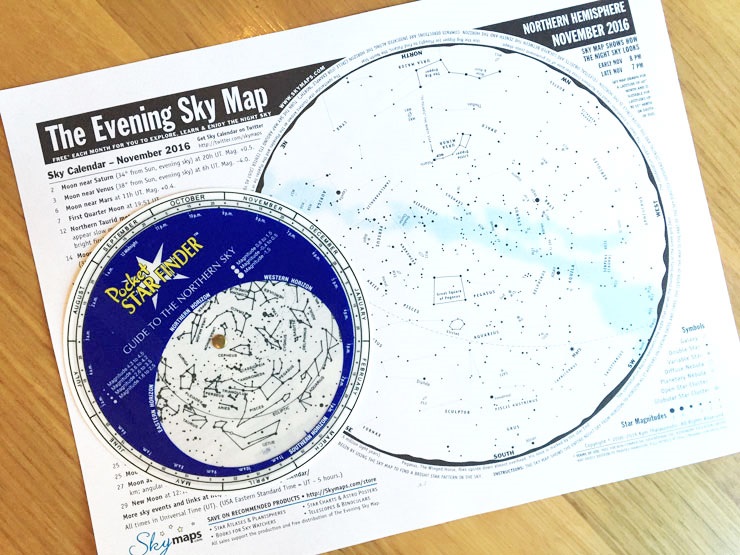A computerized telescope is a high-tech telescope paired with a GPS and computer system that allows users to track celestial bodies without the need of a star navigation map. With a computerized telescope, you won’t need to go through the pain of tracking down celestial objects manually. While anyone is free to use it, it is best suited for those who practice star gazing regularly and for those with little time on their hand to set the device when they want to use it.
Choosing the best-computerized telescope on the market is likely going to be difficult for you because there are so many models out there. To make an informed decision, you have to take certain features into consideration. In our analysis, we paid attention to the aperture, which is basically the heart of the telescope and determined how sharp and bright the view will be, the focal length; which determines the magnifications of the view, and the eyepiece; which helps to magnify the view. We also looked at the mount and weight which helps in determining how easy it will be to move around and how stable it will be. We came up with a list of top 5 picks, and the SkyWatcher S11820 deserved our Editor’s Choice nomination.
More features: Newtonian reflector, SynScan hand controller with 42,000 object database
The Sky-Watcher S11820 is a high-performance, classy, and portable computerized telescope. Transporting this high-end telescope is relatively easy. And this is because its 12 telescopes optical tube can be collapsed down.
Another impressive thing about his this telescope is its large 12 mirror delve that can bring thousands of miles right to your fingertips. This means that you will be able to see objects from Jupiter, Saturn, and Mars to nebulae, star clusters, and galaxies millions of lights years away.
The convenience offered by this computerized telescope is next to none. With the aid of the special SynScan AZ hand control that comes with it, you will be able to tour the night sky or point to a specific object at the touch of a button.
The user-friendly interface of the Sky-Watcher S11820 makes it a perfect fit for pro and greenhorn astronomers or stargazers. Since it is easy to use, inexperienced astronomers can easily master its features after a couple of observing sessions.
Unlike other computerized telescopes that can only be controlled automatically, the Sky-Watcher S11820 has a specially patented dual-encoder that allows the telescope to be operated or moved manually.
No doubt, the Sky-Watcher S11820 is a high end and impressive computerized telescope, but it has a few downsides. For starters, it has poor customer support. Also, clear instructions on how to focus the lens of the telescope are not available. Some users also complained that it is fragile and must be handled with extreme care.
More features: accessory kit included, computerized w/ 40,000 accessible objects, 354x maximum magnification, steel tripod
The Celestron NexStar 8 is a top-notch computerized telescope with posh and luxurious design. With the impressive scope of this telescope, you will be able to see any celestial body clearly. The scope can be used by armatures and professionals alike.
Stargazing enthusiasts are definitely going to be impressed by the classic orange Celestron optical tube that comes with this excellent computerized telescope.
One notable feature about the Celestron NexStar 8 is its 8-inch Schmidt-Cassegrain telescope that comes with a 40,000 plus database of celestial bodies. With this telescope, you will be able to see stars millions of miles away at the touch of a button.
All you need do to use this computerized telescope is to impute your data (date, location, and time) and you will be ready for an awesome adventure in the world of planets, galaxies and stars.
The Celestron NexStar 8, as well as its accessories, comes with a 48.5 pounds box. An interesting thing about this high-end telescope is that you don’t need to be tech savvy or have any superior technical skill to put it together. In fact, a newbie astronomer can mount the piece and make it ready for use within minutes. The reason why it is so easy to mount it is that no bolt and screws are required to put it together.
Truth be told, this is a luxurious and high-performance computerized telescope, but it has a couple of issues. First, its lenses have a very short eye relief distance. This means that you have to press your eyeball against the device to get a clear focus. Also, you may need to buy additional accessories to get the most out of it. Lastly, it is large and takes a lot of space.
More features: finder scope,star pointer, 307 max magnification, сomputerized hand control with 4,000+ object database
The Celestron NexStar 130SLT is a lightweight, budget-friendly, and efficient computerized telescope that is super easy to set up and use. The well polished first grade aluminized glass mirror that comes with this top-notch device is surely going to leave a smile on your face. The device also features a secondary mirror that can be positioned to reflect photons through the high powered eyepiece of the device.
Surprisingly, the Celestron NexStar 130SLT comes with two eyepieces. The first one which is about 25mm and fitted with a lunar filter is perfect for staring at the galaxies. The second one which is about 9mm is great for exploring the planets. The good thing about these eyepieces is that they are durable and can last for generations.
With this lightweight telescope, you will be able to see around 4000 objects (stars, nebulae, clusters, and planets)
Many have described the Celestron NexStar 130SLT as a masterpiece because of its impressive aperture, star pointer, 307 max magnification, and focal length. Whether you are new to astronomy or you are an avid stargazer, you are going to love this telescope.
Of course, the Celestron NexStar 130SLT is an efficient and budget-friendly telescope, but it has a few issues; for starters, it uses up batteries quickly. Also, its time and date need to be set after each use.
More features: AudioStar controller with 30000 objects database, steel tripod, 90-degree diagonal, internal flip mirror system
The Meade Instruments ETX125 is an excellent computerized telescope that can be used for a wide range of astronomical observation and study. With it, you will be able to see the cloud belts of Jupiter at the touch of a button. Since it is automatic, you won’t have to spend countless hours looking for an object manually, as it is computerized and automatic.
The enhanced lighting capabilities and the portability of this model make it a perfect fit for beginner and professional astronomers. Unlike the many models of computerized telescope that is difficult to mount and setup, the Meade Instruments ETX125 is easy to set up and use.
The modern design of the Meade Instruments ETX125 is certainly going to impress you. Talking about durability, the Meade Instruments ETX125 was made from a premium quality aluminium and first-grade plastic that is certainly going to last for a very long time.
The motor of this impressive telescope is cordless and can be powered with batteries that can last for 50 hours.
One amazing thing about this telescope is its dual axis mounting that can be effortlessly controlled by an electronic remote.
The Meade Instruments ETX125 also comes with automatic tracking software that can track astronomical objects with ease. Keep in mind that the software can function in any part of the world through its equatorial operation or altazimuth.
While the Meade Instruments ETX125 is an excellent telescope, it has a few downsides. First, the auto computer controller doesn’t come with it, so you are going to have to buy it separately. Secondly, it is a bit pricey, especially when compared to models from other brands similar to it. Lastly, it is can only be powered with batteries.
More features: 300x max magnification, 42000+ objects database, wooden tripod
Orion, the creator of this powerful, durable, and high-performance computerized telescope is a leader in the telescope making industry. Over the years, it has made a lot of impressive telescopes that has been lauded by many astronomers and star gazing enthusiasts. The Orion 10135 SkyQuest XT10g has made a name for itself because of its superior performance, sleek design, and impressive features.
The 4.7 focal ratio and the 10” aperture and of Orion 10135 is a good indication that it can peer into deep space at the touch of a button. Keep in mind that this telescope features the best Go-To Technology for fully motorized guiding and can be used to quickly track celestial bodies.
When it comes to performance, the Orion 10135 SkyQuest XT10g is not going to disappoint you. With its computerized Go-To Dobsonian Telescope, you will be able to see the moon like it is right in front of you. Also, you will get a very sharp image of the planets, the solar systems, and formations that are likely going to blow your mind.
It is worth mentioning that this high-performance computerized telescope comes with some 42,000 objects in its database. With it, you will have a great time keeping track of the different celestial bodies without stressing yourself out.
Granted, the Orion 10135 SkyQuest XT10g is a remarkable computerized telescope, but it has one downside and that is its Go-To Dobsonian telescope doesn’t come with a 12V power supply that is needed to operate it. This means that you will have to spend extra cash to buy it separately.
TThere are a lot of features to consider when choosing a computerized telescope. That is why we have taken it upon ourselves to put together a comprehensive buying guide to help you choose a good one that will suit your unique needs.
The obvious reason why greenhorn and professional astronomers and stargazers invest in a computerized telescope is that it is super easy to use. With a computerized telescope, you will be able to find some 40,000 plus heavenly bodies at the touch of a button. Below are some advantages of a computerized telescope.
Pros
No doubt, computerized telescopes makes star gazing easier, but it has a few downsides. Here are a few of them.
Cons

Motorized
Motorized telescopes are telescopes that use a special mounting system known as GoTo mount. These mounts can be equatorial, a single fork drive or a double fork drive. The Goto mounts are fitted with an electronic motor connected to a high powered GPS and computer system. This is what allows the user to automatically track down different objects in the sky at the touch of a button.
Non-Motorized
Non-motorized telescope takes a little bit of work to operate. They come with a computer with all the data needed to track celestial bodies, but you have to manually track and point the optics
Whether you are new to astronomy and want to buy your first telescope or you have been a stargazer for years and you are looking to replace your current telescope, it is important that you set a budget before you start shopping for it.
Expect to pay a small fortune for computerized models because they are often very expensive. The power, alignment system, accessories and a handful of features is what often determines the cost of a telescope.
Don’t forget to set a spending limit before heading out to a local store to purchase it.
Another thing you should give thoughts to before making a purchase is what you are going to be using it for. If you are going to be using it for basic astronomy, then you should opt for an inexpensive model. On the other hand, if you are an avid stargazer or a student, then you should invest in a top-notch model like the SkyWatcher S11820 or the Celestron NexStar 8 SE.
You are in luck if you are on a tight budget, as we have reviewed a computerized telescope under $500 (Celestron NexStar 130SLT).

One of the most important things you should look out for when buying a computerized telescope is its aperture. But what exactly is the aperture of a telescope? An aperture is simply the diameter of the mirror or the light gathering lens of a telescope. To know the aperture of a telescope, take a look at its focuser. The diameter of the aperture in most telescopes is usually expressed in millimetres.
Buying a telescope with a large aperture will make it easier for you to see the fine details of small objects millions of miles away. Using a telescope with an aperture of 80mm, you be able to see beyond our Milky Way galaxy. Now imagine what you will see with a telescope with an aperture diameter of 250 to 300 mm.
The SkyWatcher S11820 has an aperture diameter of 305mm while the Orion 10135 SkyQuest XT10g has an aperture diameter of 254mm.

Equatorial mounts, on the other hand, are difficult to set up. In fact, if you aren’t familiar with how to set it up, you are likely going to spend hours figuring out how to put it together. While this mount is a pain to set up, it has a couple of advantages. First, it is easy to track moving objects in the sky with it. Second, the mount can be motorized and is therefore easy to use.
Newer model telescopes are now fitted with Dobsonia mounts that are budget-friendly, durable, and sturdy. The Orion 10135 SkyQuest XT10g comes with this type of mount.
Since the focal length is an indicator of power and performance of a telescope, it is important that you check it before making a purchase. Focal length refers to the distance between the primary mirror to the area or point where the telescope is focused on.
Computer telescope with long focal length are usually very powerful and can produce a large and clear image of the object in view. Thankfully, the focal lengths of the telescopes reviewed in this guide are long. The Celestron NexStar 8 SE and the Meade Instruments ETX125 have a focal length and ratio of 2032mm and 1900mm respectively.
The size and weight of a computerized telescope are going to determine to a large extent how easy it will be before you can move them around. With a lightweight telescope like the Celestron NexStar 130SLT and the Celestron NexStar 8 SE, you will be able to explore the planets and stars, without stressing yourself out.
Carrying a telescope that weighs more than 60 Ibs like the Orion 10135 SkyQuest XT10g is surely going to be a challenge especially when climbing stairs or walking for long distance.
The performance and efficiency of a computerized telescope are determined by its magnification. The magnification capabilities of a telescope are intertwined with the size of its aperture. So, a telescope with a large aperture like the SkyWatcher S11820 or the Celestron NexStar 8 SE allows for higher magnification. Using a telescope with a higher magnification, you will be able to see distant objects clearly.
Keep in mind that the diameter of the eyepiece of a telescope can also affect magnification.

Whether you are looking to purchasing a top-notch computerized telescope like the SkyWatcher S11820 or a budget-friendly model like the Celestron NexStar 130SLT it is important that you check if it comes with all the accessories it needs to function. Keep in mind that most models don’t come with important accessories like the mount and remote controller.
Don’t allow the excitement of a purchase make you forget to check the accessories that come with the telescope you want to buy, as you will have to splash extra cash to get them after making a purchase.
Another thing you must check before buying a computerized telescope is its warranty. Computerized machines are unpredictable. One minute, they are working perfectly well and the other they faulty or start to malfunction, which is why we suggest that you go for a model with a warranty. Thankfully, all the telescopes reviewed in this guide are warranty protected. So you can buy them with confidence, knowing that if they were to develop a fault within their warranty period, you will be covered.
Skywatcher is one of the biggest brands in the realm of computerized telescopes, which is why it shouldn’t come as a surprise to you that we have chosen one of their best selling models, the Sky-Watcher S11820, as the best-computerized telescope. Its user-friendly interface, Newtonian reflector, 12 mirrors delve, impressive aperture of 305mm and 2-year limited warranty is what makes it stand out from other models out there.
Our second choice and third choice are the Celestron NexStar 8 SE and the Celestron NexStar 130SLT respectively. Both are powerful, easy to set up, adjustable and durable, making them worthy picks.
In addition, the Celestron NexStar 130SLT is very affordable, and a good option for people on a tight budget. We hope this guide helps you narrow down one of the best-computerized telescopes on the market that will suit your unique needs.





